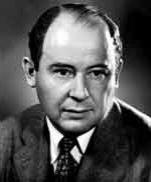What is Artificial Life?
 Michael Anissimov
Michael Anissimov
Artificial life is a blanket term used to refer to human attempts at setting up systems with lifelike properties all biological organisms possess, such as self-reproduction, homeostasis, adaptability, mutational variation, optimization of external states, and so on. The term is commonly associated with computer simulation-based artificial life, preferred heavily to robotics because of its ease of reprogramming, inexpensive hardware, and greater design space to explore. The term "artificial life", often shortened to "alife" or "a-life", was originally coined by computer scientist Christopher Langton at the International Conference on the Synthesis and Simulation of Living Systems at the Los Alamos National Laboratory in 1987.
Artificial life projects can be thought of as attempts to generalize the phenomenon of life, asking questions like, "what would life have looked like if it evolved under radically different physical conditions?", "what is the logical form of all living systems?", or "what is the simplest possible living system?"

Like many other fascinating topics related to computer science, artificial life was first studied and popularized by John von Neumann. In the late 40s, he presented a lecture "The General and Logical Theory of Automata", which introduced theoretical objects called automata, state machines which underwent transformations based on well-defined rules integrating internal and external information. Von Neumann developed such automata in high detail using nothing but graph paper and a pencil - his early automata were represented as cells undergoing state changes on an infinite 2-D grid. Throughout his last days, von Neumann worked on cellular automata and his theories of self-replicating machines, developing the first formal cellular automata with Stanislaw Ulam during the 1950s.
The following decades saw cellular automata and artificial life going in and out of style. Highlights include Cambridge professor John Conway's Game of Life, a simple cellular automaton that can easily be explained and ran on any computer, and the opening of the Santa Fe Institute, an academic establishment with substantial focus on artificial life.
In 2002, based on over a decade of intense work, British mathematician and particle physicist Stephen Wolfram published the weighty and controversial tome "A New Kind of Science", a book filled with pictures of cellular automata and explanations for how they can purportedly explain some of the most basic underlying patterns in the world. He described his own book as decades before its time, but it has just as many, if not more, critics than supporters.
Artificial life is still a very new discipline, having been founded only in the late 1980s, and is still very much under development. Like other new fields, it has been the subject of some criticism. Based on its abstract nature, artificial life has taken time to be understood and accepted by the mainstream; papers on the topic have only recently been put into prominent scientific publications like Nature and Science. As with any new discipline, researchers need time to select the most fruitful research paths and translate their findings into terms other scientists and laypeople can understand and appreciate. The field of artificial life is one that seems poised to grow as the cost of computing power continues to drop.
AS FEATURED ON:
AS FEATURED ON:











Discussion Comments
@clintflint - I don't think they should worry about the definition of life so much in general. It seems like it's more of a spectrum, whether or not we like that idea. Can you really call a virus a form of life? What about a proto-virus? At what point does it just become a packet of information rather than life and is that point beyond where we're at with computer simulations right now?
I don't think we should stop debating the ethics, of course, but that trying to hold down a definition of "life" is never going to happen.
@umbra21 - There might still be some squabbling over the definition of life, but I don't think that precludes the idea that we can create facsimiles of it.
Artificial life isn't necessarily trying to create actual life out of scratch, but only to replicate aspects of it so we can study patterns, or otherwise use it. There have been computer programs and even board games that try to replicate the way that bacteria ecosystems work for decades now. There are simulations that attempt evolutionary processes and simulations that emulate other functions of life as well.
Then there are some attempts at synthetic biology too, although I'm not sure at what point you blur the line between "artificial" and "artificially created" since if something is biological I don't think it really matters how it was made, it should still count as life.
I don't even think they've properly defined life, let alone being able to create life from scratch. I mean, the most common definition seems to be something that reproduces itself and consumes resources to grow and continue existing. That basically describes fire as well as it describes life.
Post your comments